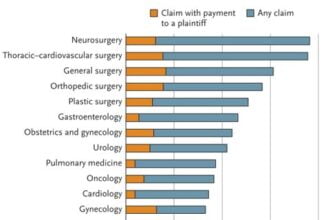The Crisis in Primary Care – Part 2
The Crisis in Primary Care – Part 2
Primary care physicians (PCPs) have too little time per patient which means too many referrals to specialists, too little time listening and thinking, no time to delve into the stress or emotional causes of many symptoms and substantial frustration by PCP and patient alike.
In my last post in this continuing series on primary care, I described a patient with a straight forward if unusual symptom who was bounced from specialist to specialist at great expense, with no one offering a diagnosis, with no resolution of her symptoms and with no physician ever exploring the actual underlying causes of her symptom – stress related to a long ago family issue. Why did this happen? Because the PCP had only 15 minutes, not enough time to listen and to think and from there delve into her psyche.
Why so little time? The short answer is the insurance system, attempting to manage costs through price controls. Medicare has for years set a low reimbursement rate for regular office visits to the primary care physician. Commercial insurance always follows Medicare’s lead and has done likewise. Reimbursement rates have remained fairly steady for a decade or more (Medicare has very recently begun to raise rates a bit as a result of the Affordable Care Act) but office costs have risen each year. Overhead includes not just the nurse and receptionist but also the billing and coding people, accounting and legal needs, malpractice and disability insurance, health care insurance for the staff, supplies and rent and utilities for the office. With costs rising and income steady, the PCP tries to “make it up with volume.” This means seeing more patients per day, usually about 24-25, often even more. In order to see that many, the PCP has generally stopped seeing his or her patients in the hospital or ER and has shortened the time per visit – most visits being about 10-12 minutes of actual “face time” with the patient.
This is enough time for a strep throat, a quick blood pressure medication check or possibly to diagnose and treat Lyme disease. But it is not enough time to deal with a more subtle problem like the patient described in the last post experienced. It is not time to explore family issues, personal stress or anxiety that so often lead to or accompany symptoms and sickness. This lady had a straight forward issue that primary care physicians encounter frequently and those that are experienced know well what it implies. But it still requires time – time to carefully listen to the patient’s story, time to put it into the context of the patient’s life situation, time to do an examination and then some time to think about how to proceed. And once the management decision is made, it takes time to talk to the patient, reassure her and yet explain that she should call should are any further concerns arise – and to come back soon for a further follow-up and attention to the underlying issues.
The situation is compounded when the PCP has a patient with multiple chronic illnesses who is taking multiple prescription medications. Chronic illnesses like diabetes, heart failure, chronic lung disease, kidney failure or multiple sclerosis by their nature are difficult to manage, persist for the patient’s lifetime (some cancers excepted) and are inherently expensive to treat. These patients need very close attention and often need the benefit of a team approach to care. The diabetic patient for example may need an endocrine consult at some point, a podiatrist, an ophthalmologist, a nutritionist and an exercise physiologist, to say the least. But any team needs a quarterback and this is or should be the primary care physician. But here again, care coordination by the PCP requires time, the one thing the PCP most lacks in today’s reimbursement environment. The result is fragmented chronic illness care, disjointed care and care that is much more expensive than it needs to be. From a total healthcare system perspective, this is critical because chronic illnesses consume 75 – 85% of all claims paid by insurers.
But with little time to listen and think, the action step of many PCPs, as with the patient described last time, is to send the patient to a specialist. Indeed, according to an article in the Archives of Internal Medicine, about nine percent of all visits to PCPs result in a specialist referral, far far higher than truly necessary. This is up from about five per cent a decade earlier; 41 million referrals per year then compared to 105 million in 2010. Something needs to be done. The push for accountable care organizations, medical homes, population health and a switch from fee for service to a salaried or capitated system are noble but unless the PCP is given time and enough of it, these changes – no matter their apparent utility – will prove valueless.
Meanwhile, fewer and fewer medical school graduates choose to enter primary care. They are smart and see that PCPs are very busy and very frustrated. They know that given the PCP’s average income it will take many years to pay off their high educational debt load.
PCPs are looking for ways out of their dilemma. Many are retiring early. Others are closing their practices and beginning to work for the local hospital. But the hospital wants the physicians to earn their keep. That means high productivity. So it is still 24 – 25 patients per day, albeit without the administrative hassles of a private practice.
It is clear that the resolution will not come from commercial insurers, not from the government insurances (Medicare, Medicaid), nor will it come from the Affordable Care Act. It will likely be in the actions and decisions of the primary care physician himself or herself to change the paradigm to allow and encourage better quality of care with lessened frustrations for doctor and patient alike.
For starters, many PCPs need to look carefully at their practice patterns and determine if they can adjust their own workload by maximizing the talents of their team of nurses, nurse practitioners and others and with better use of technologies. This requires a change in thinking about how to organize the practice and who does what and when.
Beyond that, some PCPs have decided to no longer accept insurance. Instead they expect the patient to buy care directly. And since they no longer have the expense of coding, billing and collection (one estimate of this is $58 per patient visit!) they can charge a quite reasonable amount. This can take the form of a set fee for any visit, a sliding scale depending on the type of visit and its length, or of a set amount for all care for the year, a retainer-based (concierge) approach. In each of these models and others the patient replaces the insurer as the actual customer of the physician and as such has a more appropriate professional-client relationship. The patient also becomes a purchaser of services directly and thus begins to ask questions, to challenge and in general to bring down the costs of care while receiving a higher level of quality along with greater satisfaction and less frustration for both doctor and patient.
These are but a few of the approaches being taken by PCPs today in an effort to overcome the current non-sustainable business model so that they can not only give better quality of care but reduce their sense of frustration and increase their patients’ satisfaction.
In the posts to follow I will review what primary care is all about; the characteristics of a good primary care physician and a true healer; who does primary care and why and why not; the critical role of the PCP in managing chronic illnesses; the need to listen and think – both requiring time; the use of teams in the primary care doctor’s office; the importance of care coordination, wellness promotion and disease prevention; the current non-sustainable business model; what approaches are being taken to overcome the current business model; and finally how primary care can once again take its rightful place as the backbone of the American healthcare system offering superior quality, outstanding service and greatly reduced overall costs.
The next post in this series will address the critical shortage of primary care physicians.








